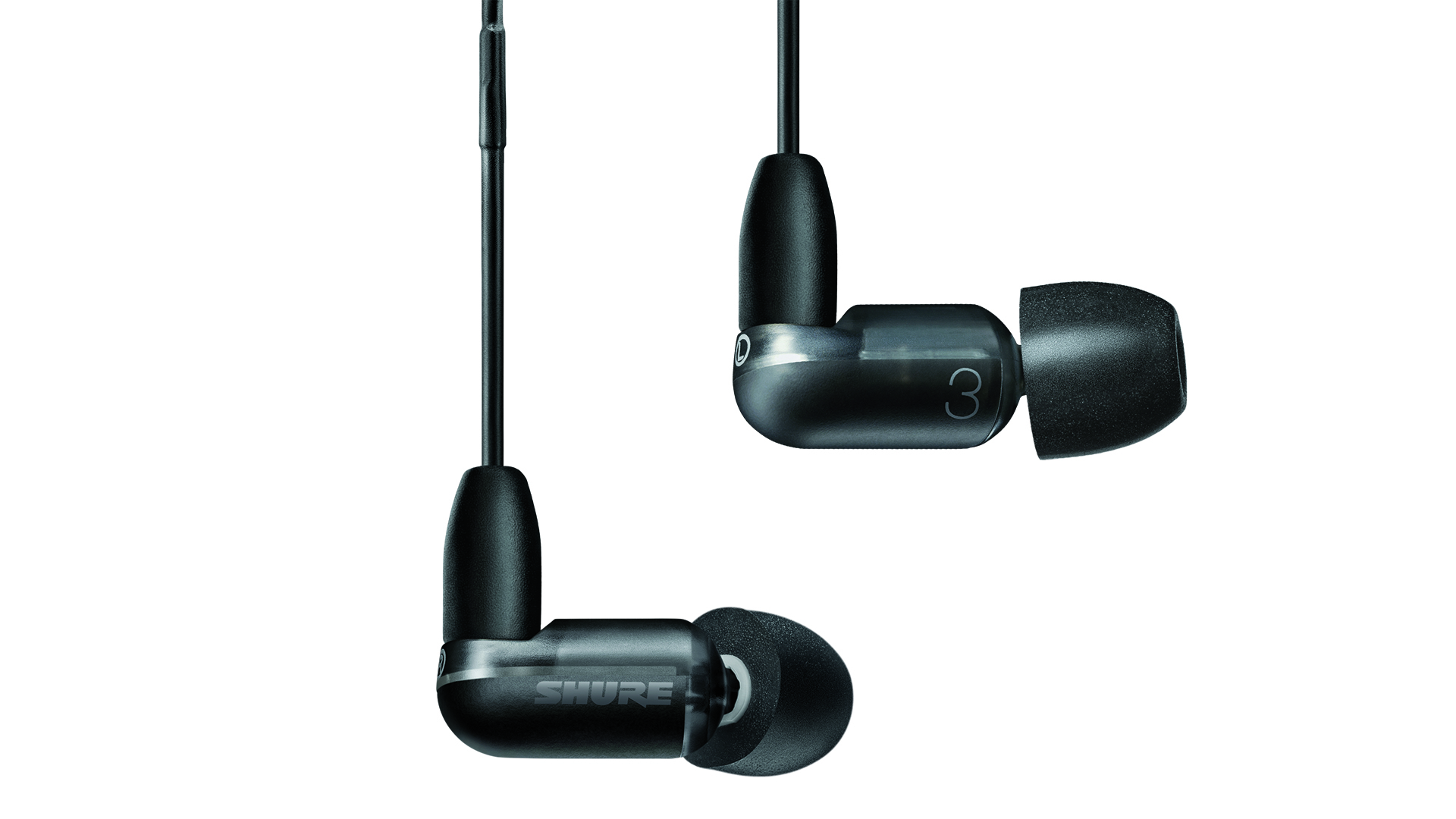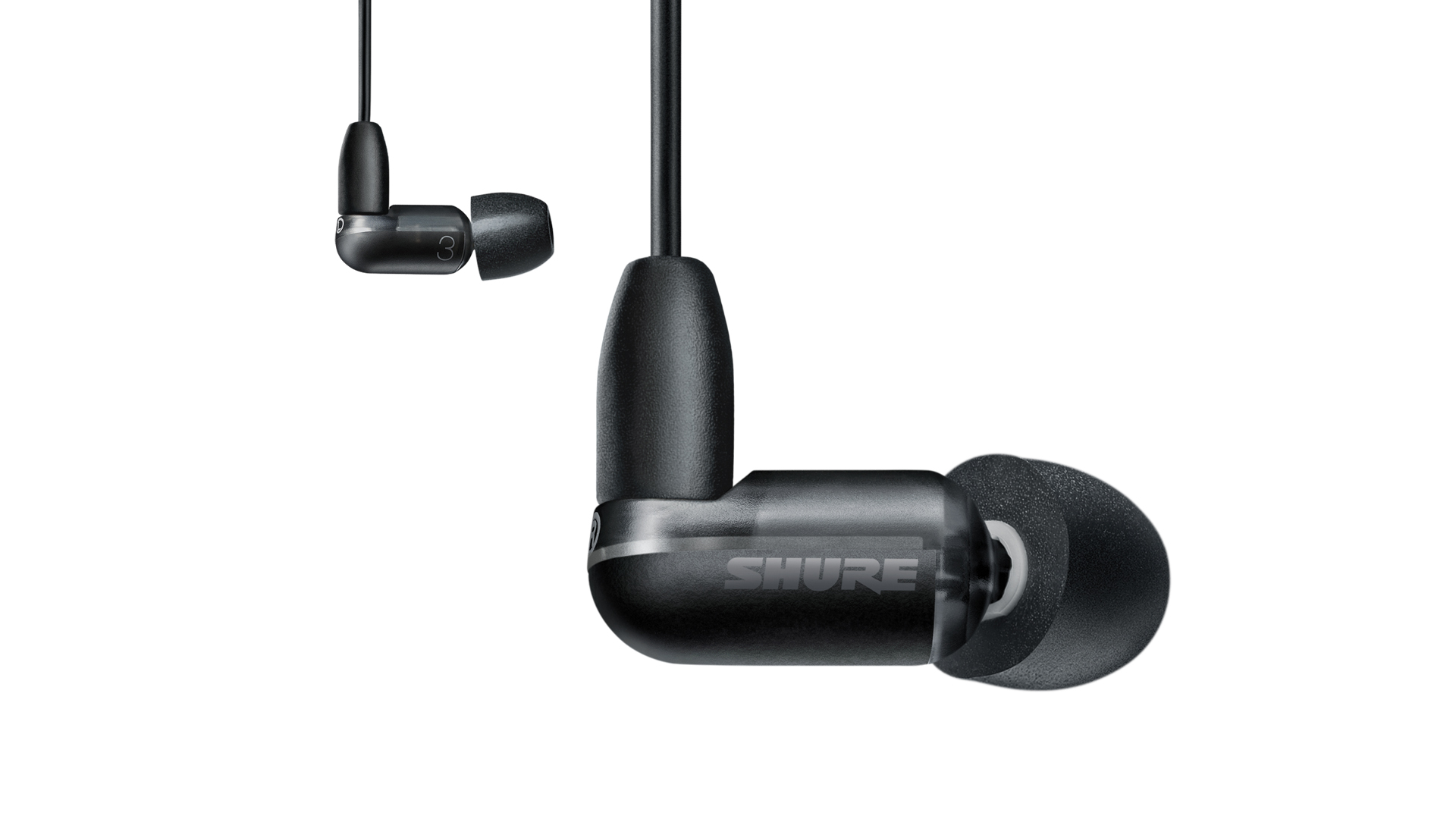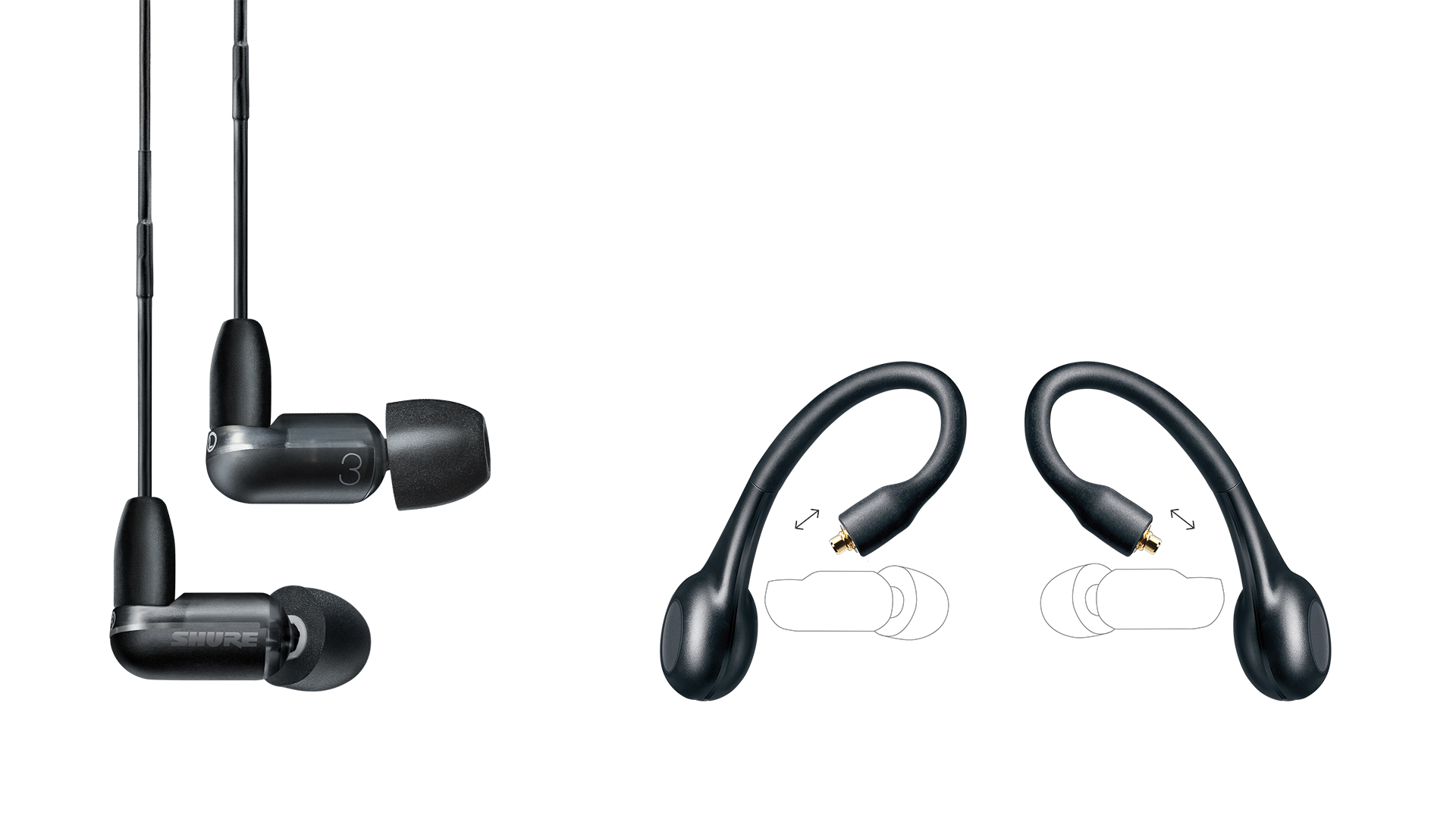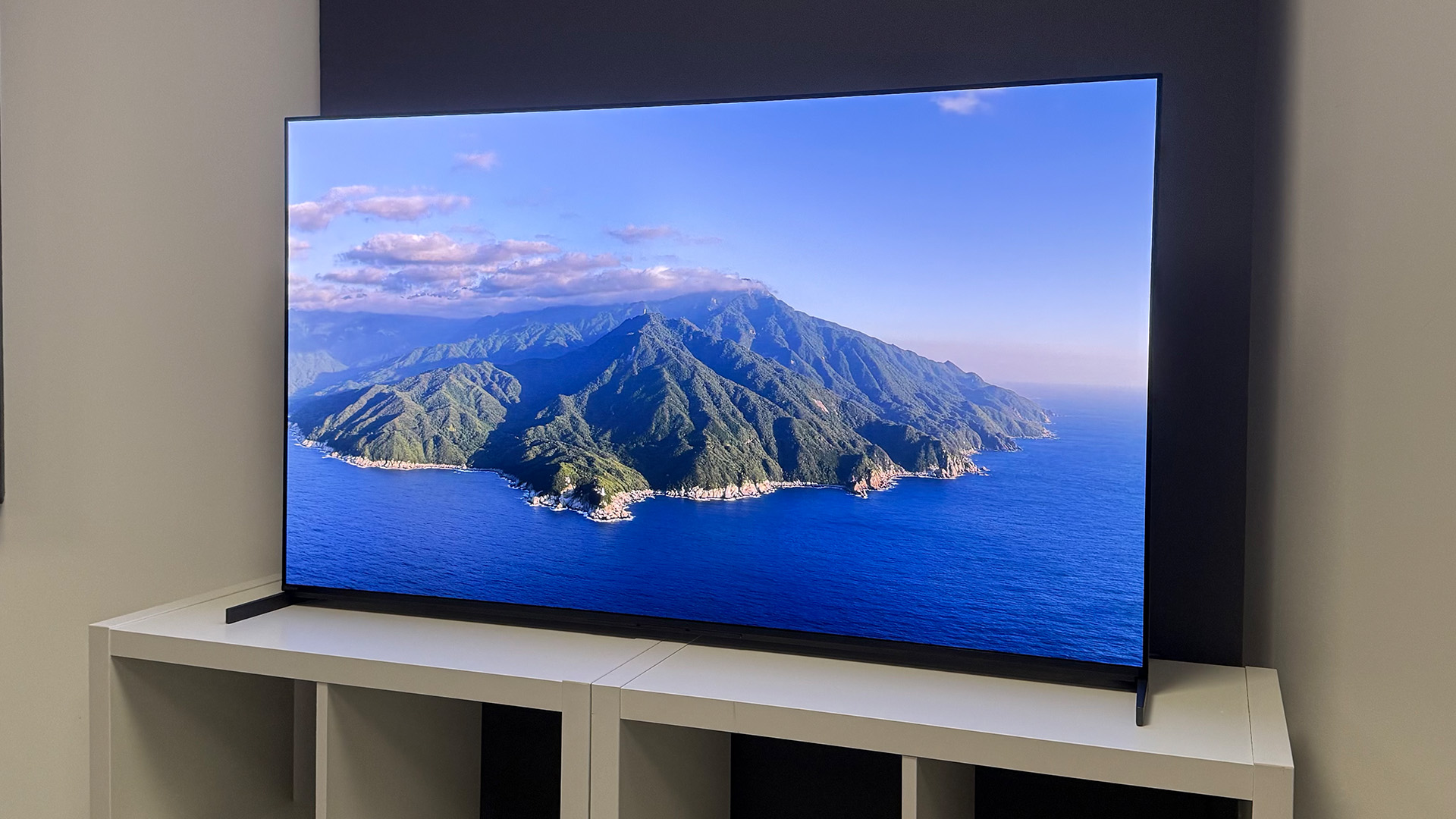What Hi-Fi? Verdict
Breathtakingly musical and comfy to wear, the Shure Aonic 3s remain the benchmark for in-ear headphones at this level
Pros
- +
Superb dynamics and musicality
- +
Detailed and balanced sound
- +
Lightweight and comfortable
Cons
- -
Understated delivery
Why you can trust What Hi-Fi?
The popularity of wireless earbuds cannot be ignored. They are, after all, an ultra-convenient type of headphone. Clever features including wireless charging cases, noise-cancelling and touch controls are all boxes that can be ticked by earbuds that cost less than the Shure Aonic 3.
The Shures have to rely on eartips for noise isolation, an in-line mic for controls, and a trusty headphone 3.5mm jack to connect to your smartphone (assuming it has one).
So, why would you even consider spending this kind of money on a pair of in-ears for your smartphone or portable music player? Spend a minute or two in the company of the Aonic 3 and you’ll soon understand why.
Sound

Radiohead’s 15 Step is a true test of timing. There aren’t many elements to the track, but it can easily trip up any speakers or headphones that aren’t paying attention.
Yet the Shure Aonic 3 absolutely nail it. Even if the track isn’t necessarily your cup of tea, the Aonic 3 make it a delight to listen to. There’s no sense of confusion, no jumbling of elements. These in-ears separate strands and knit them together in one glorious musical tapestry. The sense of rhythm and timing needs to be heard to be believed.

Frequency response 22Hz-18.5kHz
Sensitivity 108dB
Input 3.5mm (6.3mm adapter included)
Finishes 2
Weight 20.4g
The same is true for their dynamic ability. Playing Billie Eilish’s No Time To Die from the eponymous upcoming Bond film, the Shures capture the track’s eerily quiet opening before gradually layering the vocal and instruments neatly on top.
Delicate keystrokes of a piano combine with an intimate vocal that oozes detail. You can hear every breath and undulation in Eilish’s voice. The song burns slowly and grows gradually in anticipation of the song’s dynamic crescendo. Even without the visuals that usually accompany a Bond movie track, the Shures leave you completely spellbound.
The latest hi-fi, home cinema and tech news, reviews, buying advice and deals, direct to your inbox.
In the nicest possible way, the Aonic 3 are the kind of headphones you can put on and just forget about. There isn’t a single element that sticks out – bass notes don’t protrude and highs don’t cut too deep. The Shures are honest, transparent and true to the original recording. There’s detail and analysis, but the headphones stop well short of sucking the life and emotion out of the music.
Comfort

Inspired by Shure’s old E4 in-ears, the Aonic 3 use a single vented balanced armature driver. They’re the smallest earbuds in Shure’s current line-up and we’re big fans of the fit and level of comfort that they offer. They’re lightweight, and the fact the headphone cable can be secured over the top of your ears instead of just hanging down means the Aonics feel secure at all times.
Shure wants to give you the best chance possible of getting a good seal for your ears, and to that end it presents you with nine different pairs of eartips spanning four different styles, including silicone, foam and flange designs. Other earbud manufacturers should take note.
There’s a certain knack to getting the swivelling eartips in place, but once you’ve nailed the technique down and slotted them in, you’ll have excellent isolation.
Build

Along the cable for the right ear is an in-line remote with mic. Depending on whether you’re using an Apple or Android phone with the Shures, you can flick a switch to enable the playback and volume controls to work. It’s a simple yet effective way of making sure as many users as possible are catered for.
The headphone cable can be detached from the earbuds (using their MMCX connection) so you can transform them into a pair of wireless in-ear headphones. For this, you’ll need Shure’s True Wireless Secure Fit Adapter (£175, $179).
A sturdy circular carry case for storage comes as standard and you’re also provided with a 3.5mm to 6.3mm headphone adapter should you want to plug the Shures into a traditional stereo amplifier. Shure has kept things simple when it comes to finishes – the options are either black or white.
Verdict
If we’re being picky, we could argue that the Shures aren’t the most thrilling pair of headphones we will ever hear. Yet they still manage to impress track after track after track. We’re struggling to think of a pair of in-ear headphones at this level that even come close to the Shures for transparency, detail, dynamics and musicality.
If you’re happy with the price tag and can resist the bells and whistles promised by wireless earbuds, you'd be crazy not to give the Shure Aonic 3 a chance.
Review published: 2020. Review updated: November 2024.
SCORES
- Sound 5
- Comfort 5
- Build 5
MORE:
Looking for more choice? Here are the best in-ear headphones you can buy
Grab a bargain with the best headphones deals
What Hi-Fi?, founded in 1976, is the world's leading independent guide to buying and owning hi-fi and home entertainment products. Our comprehensive tests help you buy the very best for your money, with our advice sections giving you step-by-step information on how to get even more from your music and movies. Everything is tested by our dedicated team of in-house reviewers in our custom-built test rooms in London, Reading and Bath. Our coveted five-star rating and Awards are recognised all over the world as the ultimate seal of approval, so you can buy with absolute confidence.
You must confirm your public display name before commenting
Please logout and then login again, you will then be prompted to enter your display name.


